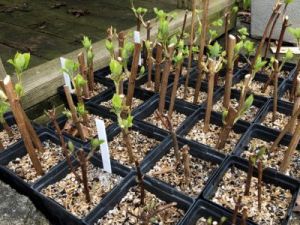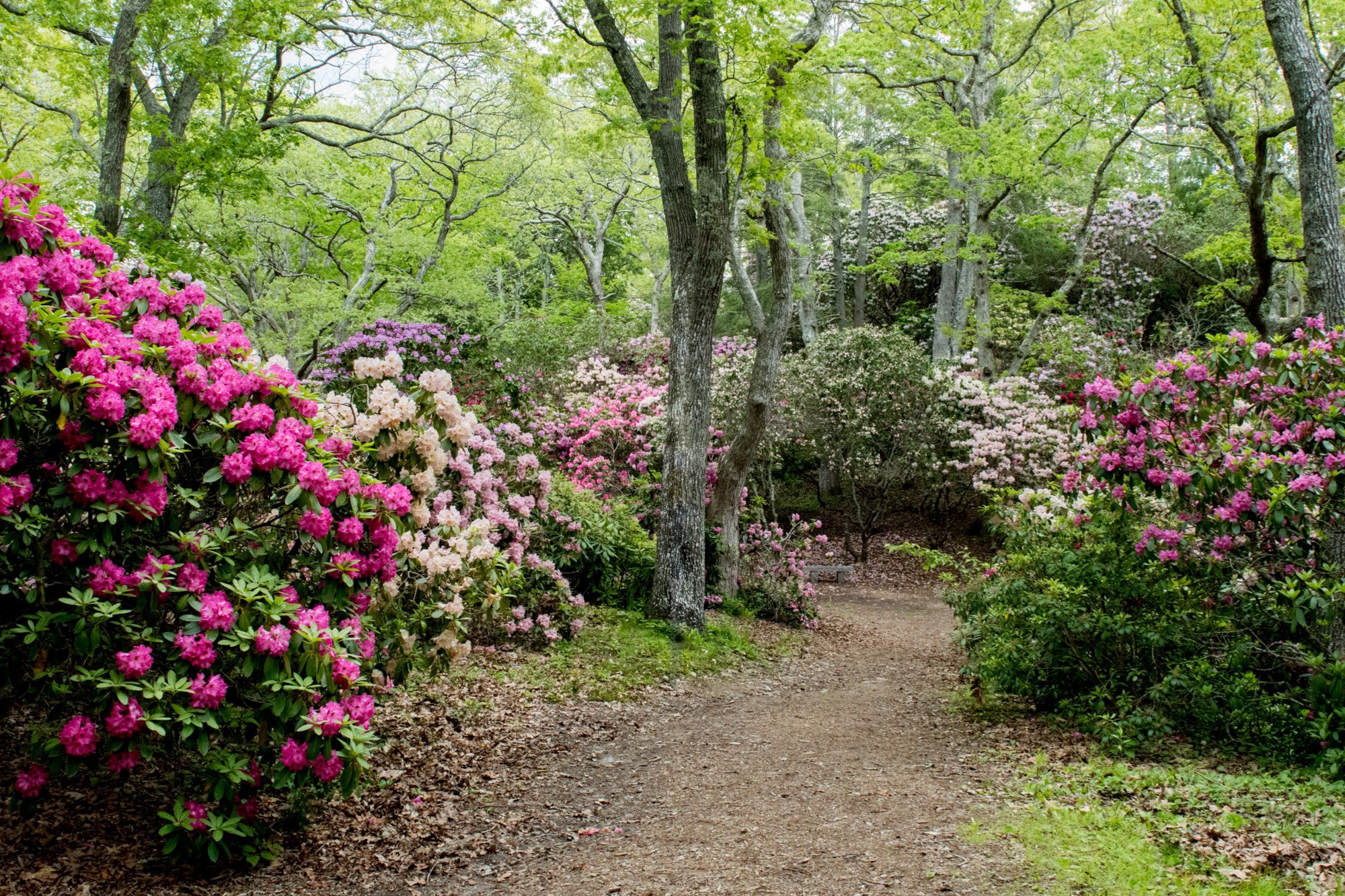Follow Up: Winter Propagation of Hardwood Trees & Shrubs
Late last fall I discussed winter propagation of hardwood trees and shrubs. I decided to do a follow-up article now to let you know the latest results.
As I mentioned, fall is the time to start the process of this type of cutting propagation but now is when you start to finally see some of the results. I took cuttings of dormant woody shrubs in late November and early December and treated them just as I would a semi-hardwood cutting. I cut the ends at a forty-five degree angle, scared two sides of the cutting (which was about 6-8” long) and dipped them in rooting hormone. I put them in a sandy soil mix (in 4” pots), watered them in and then placed them in my basement bulkhead door for the winter. Over the winter I watered them a few times to make sure they didn’t desiccate.
 Several weeks ago, I took them out of the bulkhead and put them on the deck outside. The buds had started to swell even before I moved them outside. Now that they’re outside, I’ve checked them a few times to see if there’s any sign of rooting. I noticed over the winter that they were starting to develop callus tissue around the base and the areas where I had scared them. Today I popped two out (they’re stuck two to a pot) and there are roots developing on them! I’m including several pictures of the flats filled with the pots as well as the cuttings so you can see the progress.
Several weeks ago, I took them out of the bulkhead and put them on the deck outside. The buds had started to swell even before I moved them outside. Now that they’re outside, I’ve checked them a few times to see if there’s any sign of rooting. I noticed over the winter that they were starting to develop callus tissue around the base and the areas where I had scared them. Today I popped two out (they’re stuck two to a pot) and there are roots developing on them! I’m including several pictures of the flats filled with the pots as well as the cuttings so you can see the progress.
This is such a great way to propagate your plants. You can stick them pretty much any time in the fall/winter. It takes minimal time. There’s really no work after the initial taking of the cuttings as the plants are dormant and don’t require any of the misting or humidity that plants need when propagated as semi-hardwood cuttings in the summer. In many ways, this really is propagation by cuttings for dummies.
My cuttings have already begun putting on new growth and hopefully will continue to grow through the season. I’m planning to pot-up the Hydrangea arborecsens in several weeks. The other plants I may wait until next spring to pot them as I want to make sure they’re well established before I disturb them.
I’ve learned that when using this method of propagation, since the plants must rely on energy reserves in the stem to develop the callus tissue and eventually the new roots, you should start with larger, thicker stems as your cuttings. These thicker stems, usually 3/8” – ½” in diameter stems have better reserves and I’ve had better success with the larger stems than smaller, thinner stems. When doing semi-hardwood cuttings you usually work with current years growth for your cuttings. In the case of hardwood, dormant season cuttings, you are working with 1-2 year old stem tissue.
It’s a bit early to say that this was a total success but judging by the growth on the cuttings, nearly 100% of the cuttings have rooted and I should have a bumper crop of new plants for my garden!








